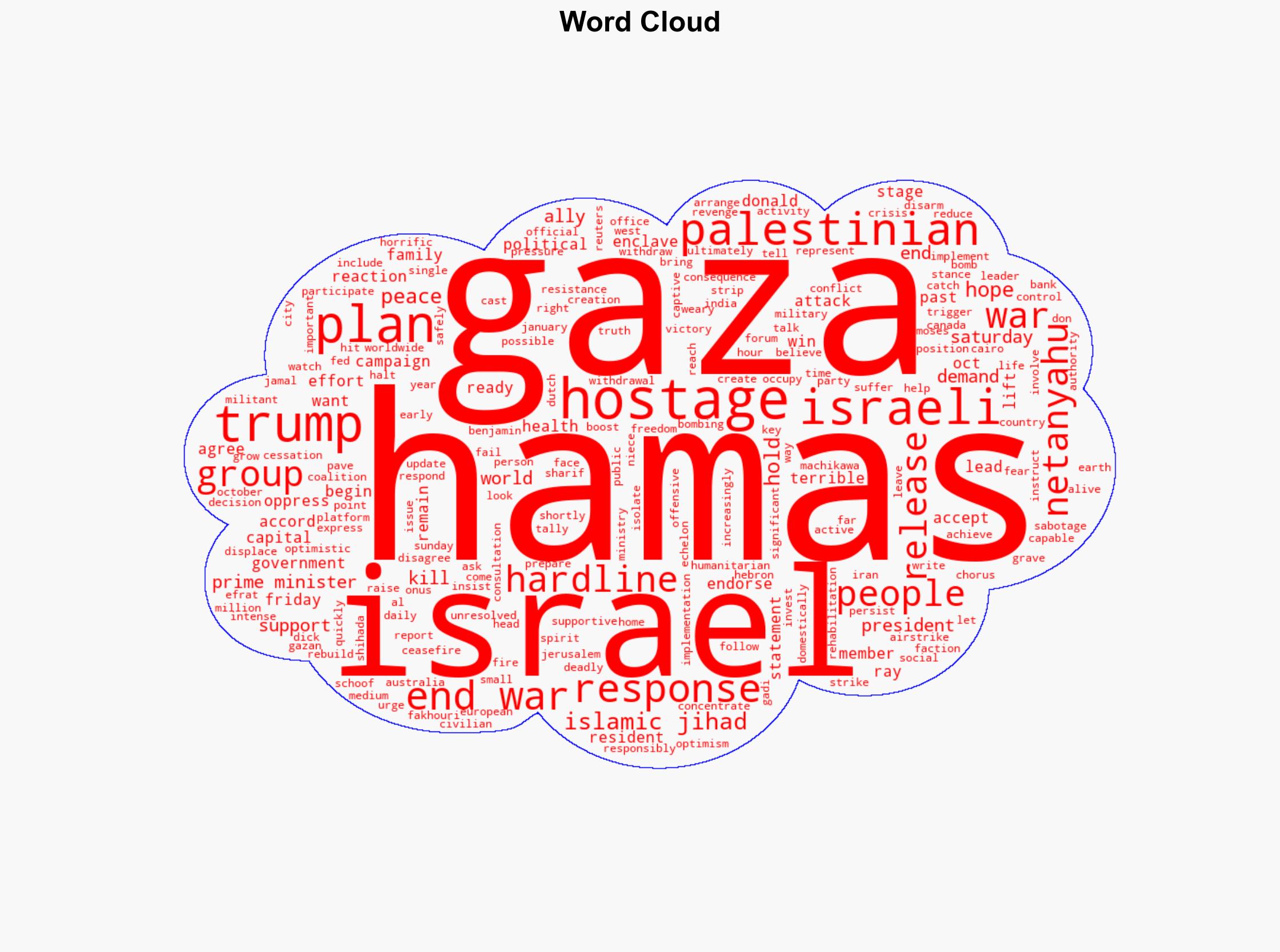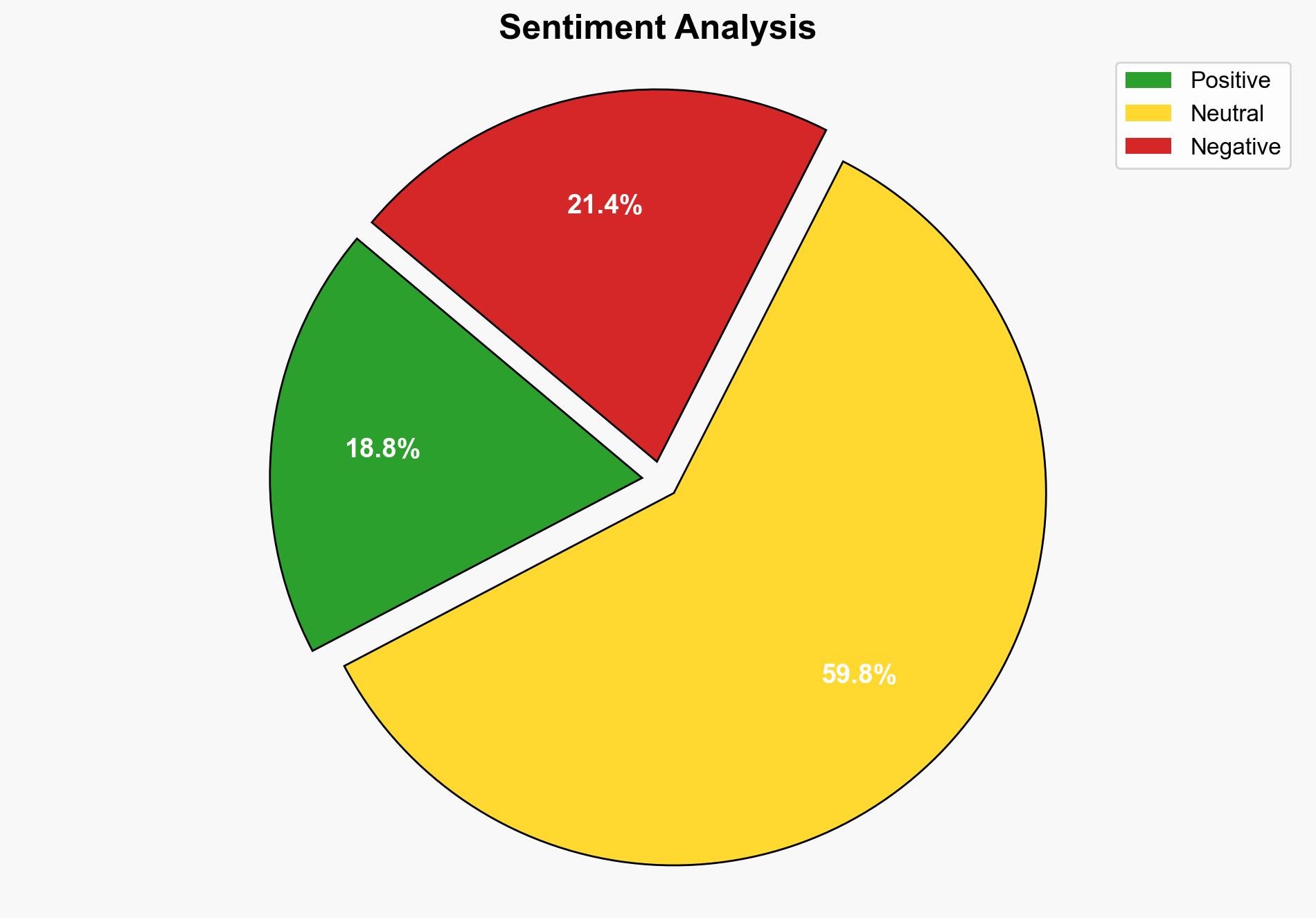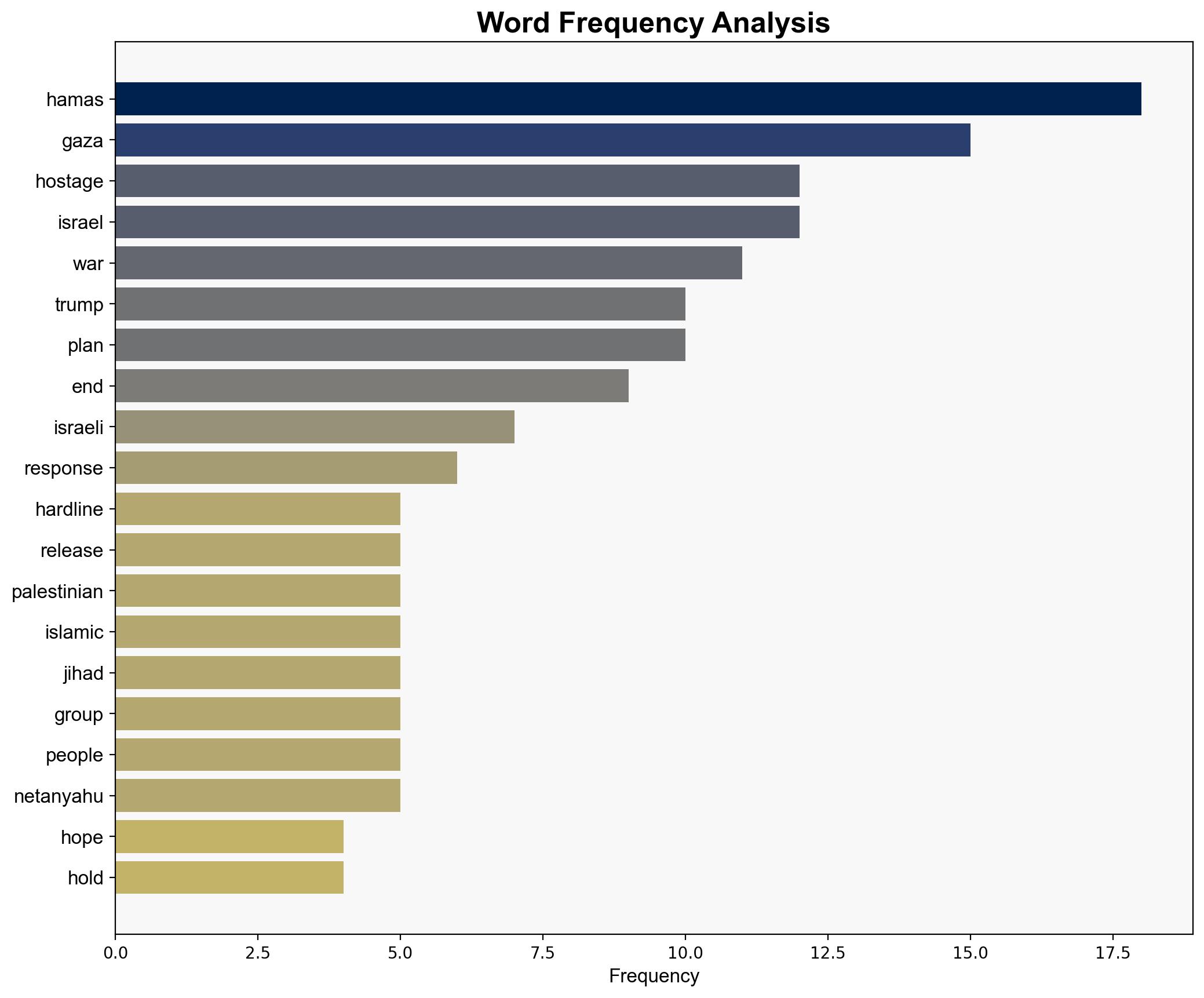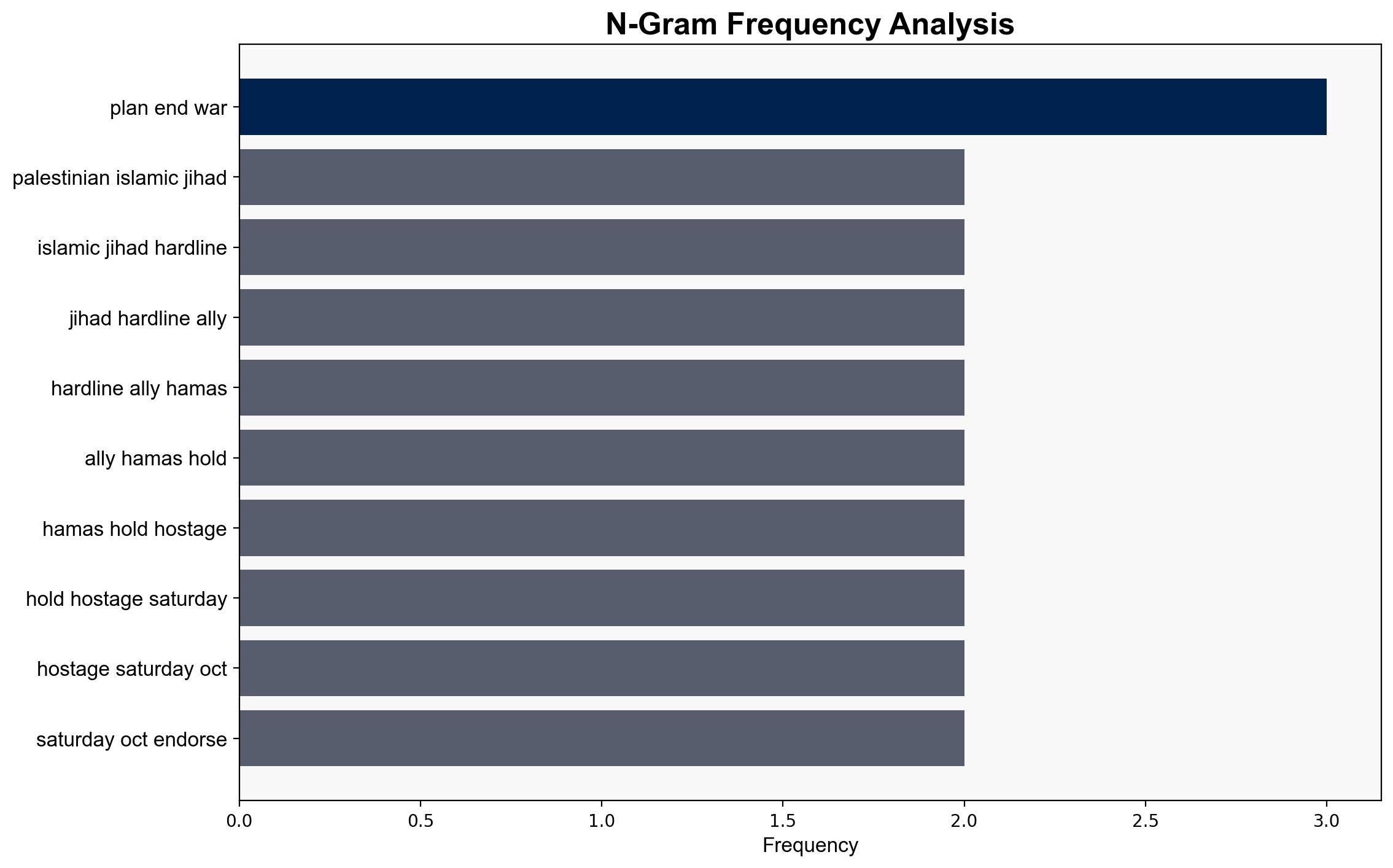Hamas response to Trump plan wins hardline support lifting hostage release hopes – CNA
Published on: 2025-10-04
Intelligence Report: Hamas response to Trump plan wins hardline support lifting hostage release hopes – CNA
1. BLUF (Bottom Line Up Front)
The most supported hypothesis is that Hamas’s acceptance of key aspects of the Trump plan is a strategic move to gain international support and pressure Israel into concessions, including the release of hostages. Confidence level: Moderate. Recommended action: Engage in diplomatic efforts to support a ceasefire and facilitate negotiations for hostage release, while preparing for potential escalation if talks fail.
2. Competing Hypotheses
1. **H1: Strategic Concession** – Hamas’s response to the Trump plan is a calculated strategy to gain international legitimacy and pressure Israel into releasing hostages, potentially leading to a ceasefire.
2. **H2: Tactical Deception** – Hamas’s acceptance of the plan is a tactical ploy to buy time, regroup, and strengthen its position while maintaining hostilities against Israel.
3. Key Assumptions and Red Flags
– **Assumptions for H1:** Hamas is willing to compromise for international support; Israel is open to negotiation under international pressure.
– **Assumptions for H2:** Hamas prioritizes military strength over diplomatic solutions; Israel’s hardline stance remains unchanged.
– **Red Flags:** Inconsistent statements from Hamas and allied groups; lack of concrete actions following public endorsements.
– **Blind Spots:** Internal dynamics within Hamas and Israeli government decision-making processes.
4. Implications and Strategic Risks
– **Implications:** A successful negotiation could lead to a temporary ceasefire and humanitarian relief in Gaza. Failure could escalate into broader regional conflict.
– **Strategic Risks:** Potential for increased violence if negotiations collapse; risk of international diplomatic fallout if perceived as biased towards one side.
– **Economic and Geopolitical Dimensions:** Disruption of regional trade; potential shifts in alliances based on perceived support or opposition to the plan.
5. Recommendations and Outlook
- **Mitigate Risks:** Encourage multilateral diplomatic engagement to support negotiations and reduce hostilities.
- **Exploit Opportunities:** Leverage international support to facilitate humanitarian aid and rebuild trust between parties.
- **Scenario Projections:**
– **Best Case:** Successful negotiation leads to a ceasefire and hostage release.
– **Worst Case:** Breakdown in talks results in intensified conflict and regional instability.
– **Most Likely:** Prolonged negotiations with intermittent hostilities and international diplomatic pressure.
6. Key Individuals and Entities
– **Donald Trump**: Former U.S. President, proponent of the plan.
– **Benjamin Netanyahu**: Israeli Prime Minister, key decision-maker in Israel’s response.
– **Hamas Leadership**: Decision-makers in Gaza’s response to the plan.
– **Palestinian Islamic Jihad**: Ally of Hamas, influencing hardline support.
7. Thematic Tags
national security threats, counter-terrorism, regional focus, diplomatic negotiations, hostage crisis




